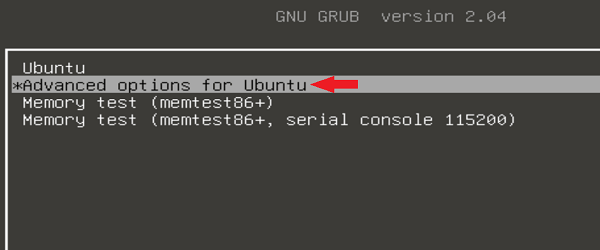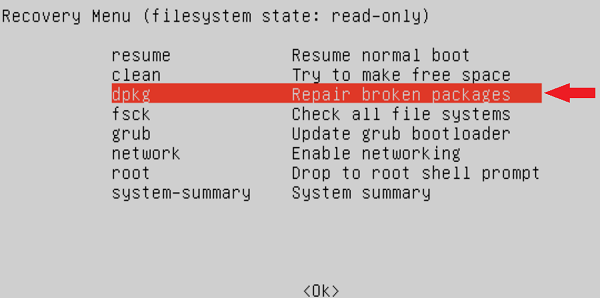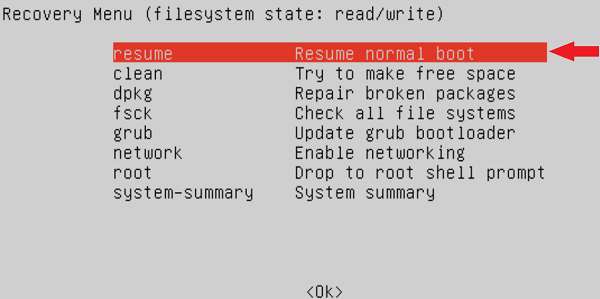Segmentation Fault Core Dumped Ubuntu
What is a Segmentation Fault?
Segmentation Fault or access violation (segfault in short) is a failure condition or fault that is arisen by hardware with memory protection, alerting an operating system the software has attempted for accessing a restricted memory area (a memory access violation).
It is a general protection fault form on standard x86 systems. In response, the kernel of the operating system will usually implement a few corrective operations, generally passing that fault on to the offending process by transferring a signal to the process.
In some cases, processes can install a signal handler, permitting them for recovering on their own, but otherwise, the default signal handler of the operating system is used, generally leading to the process’s abnormal termination, and a core dump sometimes.
- Segmentation faults are a basic error class in programs specified in many languages such as C language that offers low-level memory access and some to know safety checks.
- Primarily, they arise due to many errors in pointers used for virtual memory addressing, specifically illegal access.
- Other types of memory access fault are a bus error, which also includes several causes.
- These appear primarily because of inaccurate physical memory addressing or misaligned memory access.
- These are some memory references that the hardware can’t address instead of references that the process isn’t permitted to address.
- Several programming languages might apply mechanisms created for avoiding segmentation faults and developing memory safety. For instance, the Rust programming language applies an ownership-based model for ensuring memory safety. Another language like Java and Lisp applies garbage collection, which ignores many memory error classes that could cause segmentation faults.
Overview of Segmentation Fault
- A segmentation fault appears when any program attempts for accessing a memory location that it’s not permitted for accessing or attempts for accessing a memory location in a way that’s not permitted (for example, attempting for writing to a read-only location, or for overwriting the operating system part).
- In computing, the word “segmentation” has several uses. In the way of segmentation fault, a word used since 1950, it defines the address space of the program, only the address space of the program is readable with memory protection, and of this, just the stack and the data segment read-write portion of the program is writable. Hence, attempting for reading outside the address space of the program, or writing to the read-only part of the address space outcomes in a segmentation fault.
- A segmentation fault appears if the hardware finds an attempt for referring to a non-existent segment, a location external to the segment bounds, or a location in a style not permitted by the permissions granted for the segment on the systems using the memory segmentation of the hardware for providing virtual memory.
- Generally, an invalid page fault causes segmentation fault on the systems using paging only. The page faults and segmentation faults are both faults arising from the virtual memory management system. Also, segmentation fault can independently occur of the page faults; illegitimate access to any valid page is the segmentation fault. The segmentation fault can appear in a page’s middle. Inside a buffer overflow that resides in a page but overwrites memory illegally for example.
- Initially, the fault is arisen from MMU (memory management unit) on illegal access, as a segment of its memory protection aspect, or an invalid page fault at the hardware level. If the problem isn’t an invalid logical address but rather an invalid physical address, the bus error arises rather. So, these aren’t always distinguished.
- This fault is found and a signal is sent to the offending process, turning on the handler of the process for that signal at the operating system level. Different types of operating systems have distinct signal names for indicating that a segmentation fault has appeared.
- A signal known as SIGSEGV (short for segmentation violation) is transferred to the offending process on the Unix-like operating systems. The offending process gets an exception, i.e., STATUS_ACCESS_VIOLATION on Microsoft Windows.
Causes of Segmentation Fault
The circumstances under which a segmentation fault appears and how it manifests itself are specific to the operating system and hardware. Different hardware arises different faults for several circumstances and different operating systems transform these into different signals that are sent to the processes.
The forthcoming cause can be a memory access violation, although the underlying cause is a software bug of a few sorts. Debugging a bug or deciding the root cause can be easy in a few cases, in which the program will lead to a segmentation fault consistently. However, the bag could be difficult for reproducing and rely on the memory allocation on every run in other cases.
The following are a few typical causes of the segmentation fault:
- Attempting for accessing a non-existent memory address (external to the address space of the process)
- Attempting for accessing memory a program doesn’t have rights to (like kernel structures within the process context)
- Attempting for writing read-only memory (like code segment)
- In turn, these are often arisen by many programming errors that outcome in invalid memory access:
- Attempting for executing a program that doesn’t correctly compile. (A few compilers will result in an executable file regardless of the existence of compile-time errors.)
- A stack overflow
- A buffer overflow
- Assigning or dereferencing to a freed pointer (a dangling pointer, which indicates memory that has been deleted/deallocated/freed)
- Assigning or dereferencing to an uninitialized pointer (a wild pointer, which indicates a random memory address)
- Dereferencing to a null pointer usually indicates an address that is not a part of the address space of the process
Segmentation faults often appear due to the errors in the use of a pointer, specifically in C dynamic memory allocation in C code. Dereferencing to a null pointer, which outcomes in undefined behavior, will lead to a segmentation fault. It is due to a null pointer that can’t be a valid memory address. The dangling pointers and wild pointers indicate a memory that might or might not exist and might or might not be writable or readable and thus can outcome in transient bugs.
Resolve segmentation fault in Ubuntu
This error might strike our Ubuntu system at any point. Segmentation fault is when our system attempts to access any page of memory that does not exist. Core dumped defines when a code part attempts to perform a write and read operation on a free or read-only location. Generally, segfaults are associated with a file named core and happen at the time of up-gradation.
While executing a few commands at the time of the core dump situation we might encounter the “Unable to open lock file” error. It is due to the system is attempting to take a bit of block that is not existing. It is because of the crashing of binaries of a few specific programs.
We may be debugging or backtracking for resolving it but the solution is to fix the broken packages by implementing some steps which are mentioned as follows:
1. Remove the lock files available at distinct locations.

2. Removing repository cache.

3. Upgrade and update our repository cache.
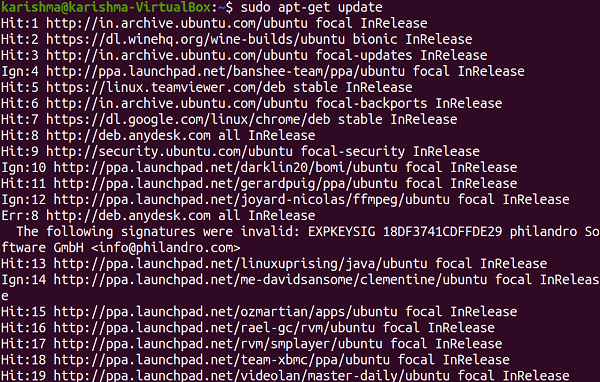
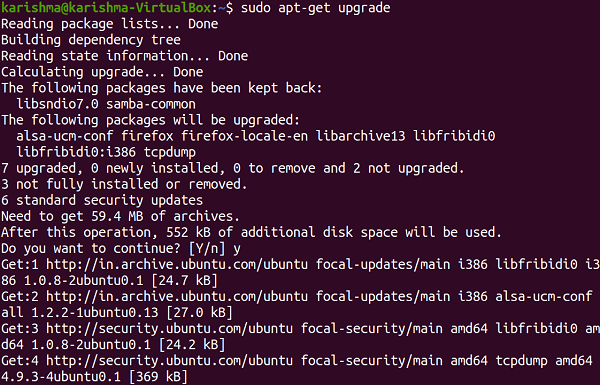
4. Now upgrade our distribution it will update our packages.
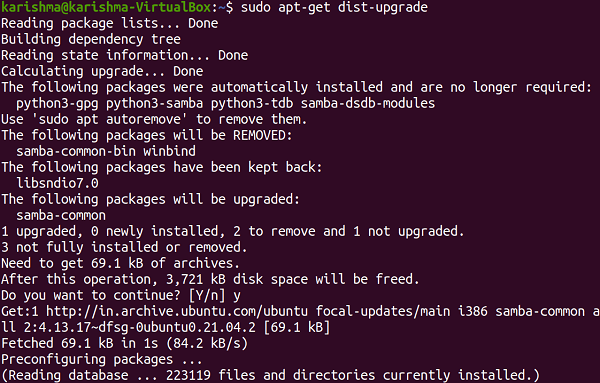
5. Search the broken packages and remove them forcefully.
A great way which always will work is as follows apart from the command line:
- In start-up mode, run Ubuntu by clicking the Esc key after the reboot.
- Choose “Advanced options for Ubuntu”
- In recovery mode run Ubuntu and we will be mentioned several options.
- First, choose the “Repair broken packages”
- Then, choose the “Resume normal boot”
Now, we have two ways to resolve segmentation fault GUI and CLI. Sometimes, it might also happen that the command, i.e., apt is not working due to the segfault, so the CLI method will not implement. In that situation, do not worry because the GUI method will always work for us.
Handling Segmentation Fault
The default task for a bus error or segmentation fault is the abnormal termination of a process that encountered it. A core file might be produced to help to debug, and other platform-dependent tasks might also be implemented. For example, many Linux systems applying the grsecurity patch might log SIGSEGV signals for monitoring for possible intrusion attempts with buffer overflows.
On a few systems, like Windows and Linux, it is possible for a program itself to manage a segmentation fault. The running program can’t only manage the event but might extract a few details about its status like the values of processor register, getting a stack trace, the line of a source code when it was encountered, memory address that was accessed invalidly, and whether the task was a write or a read depending on the operating system and architecture.
However, a segmentation fault defines that a program has an error that requires fixing, it’s also possible to cause such failure intentionally for the testing purpose, debugging, and also to imitate platforms in which direct access is required to memory. The system should be able to permit the program to execute even after the error occurs in the latter case.
In this situation, when the system permits, it’s possible to manage the event and enhance the processor program counter to “jump” on the failing instruction to proceed with the execution.
Examples of segmentation fault
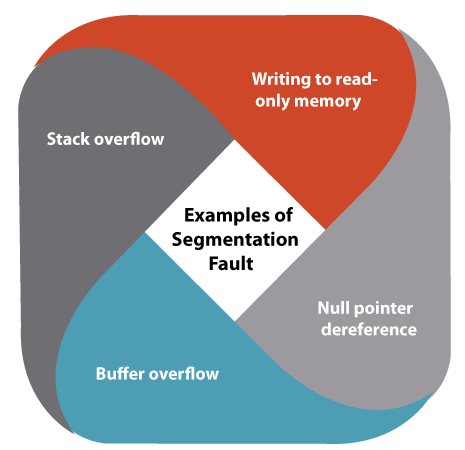
Writing to read-only memory
It arises a segmentation fault. It appears when the program writes to a part of its code segment or the read-only part of the data segment at the code error levels because these are loaded via the operating system into the read-only memory.
Null pointer dereference
In C and other C-like languages, the null pointers are used for meaning “pointer to no object” and as the error indicator and dereferencing in the null pointer (a write or read from a null pointer) is a very basic program error.
The standard doesn’t say that the null pointer is similar to the pointer to 0 memory address, though that might be the case. Almost all operating systems map the address of the null pointer such that using it leads to a segmentation fault.
This behavior is not guaranteed by any C standard. In C, dereferencing the null pointer is the undefined behavior, and a conforming implementation is permitted to assume that a pointer that’s dereferenced isn’t null.
Buffer overflow
Stack overflow

